Murder-Rock: Dancing Death (1984)
Directed by: Lucio Fulci
Written by: Gianfranco Clerici, Lucio Fulci, Roberto Gianviti, Vincenzo Mannino
Starring: Claudio Cassinelli, Cosimo Cinieri, Olga Karlatos, Ray Lovelock
AKA MURDEROCK: UCCIDE A PASSO DI DANZA, THE DEMON IS LOOSE, SLASHDANCE
ITALY
AVAILABLE ON BLU-RAY [REGION ‘A’ ONLY] AND DVD
RUNNING TIME: 84 mins
REVIEWED BY: Dr Lenera
Candice Morman runs a dancing class New York. She pushes her students very hard, especially when she learns that three of them will be selected to appear in a high profile TV show. Then somebody begins to kill the girls, and when Lt. Borges begins his investigation he enters into a web of rivalry and malice where virtually everybody could be a suspect. Candice has also been having dreams where she’s pursued by a man wielding a hat pin just like the murderer, but then she sees the man’s face on a billboard and sets out to track him down. Could he be the killer instead?….
And so I’m also back with my Lucio Fulci series, and yes, there are plenty of films to come in the prolific career of this director who became very erratic in the final stage of his career where carelessness, tiny budgets and illness hampered the quality of his work, but who before that was very good indeed and diverse enough for the nickname ‘the godfather of gore” he acquired to seem rather crass and even insulting. None of the films to come I’ve seen before and I wasn’t sure what to expect from Murder-Rock, which was supposedly made when his output was becoming poorer, yet The Devil’s Honey, his ‘erotic thriller’ from two years later, turned out to be really good, a genuinely notable work. This one is basically an attempt to combine the giallo, including quite a few elements from Fulci’s The New York Ripper so that the film sometimes seems like an attempt to rework Fulci’s bloody, sleazy and nihilistic thriller into something that would get less vitriol and be more easily accessible, and the disco-flavoured likes of Fame and Flashdance. Possibly influenced also by Blood And Black Lace, it doesn’t play with the giallo format as much as Fulci’s others, but works better than you might expect, its poor reputation seeming to be largely down to Fulci holding back considerably on the violence, though I don’t see why that should automatically be a problem. The frequent dancing quickly becomes tiresome and the music from Keith Emerson [who provided such great backing for Dario Argento’s Inferno] is hardly great [and certainly not what I’d call rock] unless you really are a fan of this sort of music even at its lowest ebb, but it’s certainly one of Fulci’s best looking movies.
It came after Fulci’s bizarre sword and sorcery effort Conquest, and his entry into the dystopian future barbarian cycle Rome 2072: Fighter Centurions, the latter of which I haven’t seen yet. He’d caught hepatitis while filming Conquest, and was still ill from it when he began Murder-Rock. Though initiated by producer Augusto Caminito, Fulci had high hopes for it, and both planned for it to be the first part of a themed trilogy, Murder-Rock to be followed by two more music-themed gialli titled Killer Samba and Thrilling Blues. It had more filming in New York than any other Fulci film even if interior shooting was still done in Rome, and the obvious intent was to pass it off as an American film. Apart from the principle performers, the cast was largely made up of dancers who went un-credited, something which isn’t really fair seeing as some of them had substantial screen time and dialogue. Fulci had a reputation for flying into rages and this time his victim was Christian Borromeo [Willie Bowman] who dared to question his directing. However, according to Gerreta Gerrata [Margie], there was no bullying of the female cast members which Fulci was renowned for; he even laughed when she rolled her eyes while being asked to improvise a line and said, “I thought melodrama died in the 1880’s”, despite his hepatitus getting steadily worse and a heroin epidemic in Rome having taken the life of a close family member in what was a long list of personal tragedies. However, Murder-Rock was released to little interest in Italy and didn’t get shown in US cinemas until 1990 when it was given the strange title The Demon Is Loose. Fulci had to semi-retire for two and a half years, causing the trilogy project to be abandoned.
After some New York skyline shots we get a break dancing sequence that has nothing to do with what follows seeing as none of its characters are in it, and almost immediately we follow it up with another dance scene which is really pushing it for those who primarily want to see a giallo. The main setting is called the Arts For Living Centre, the exterior shots of its entrance being of a real place despite its odd name, though one for mental health treatment, not dancing. Anyway, we see Candice pushing her class to their limits, and some don’t like it, but Susan still has enough energy to have sex with her boyfriend Willie in the locker room while everyone else has left, and suddenly the film takes on a really strong sinister atmosphere as the camera slowing tracks around the place while the lighting flashes off and on in what was already a well used device, especially by Mario Bava, but one which makes us wonder if a killer will suddenly be revealed in a flash before then vanishing. The two go to shower separately because he has some clothes he needs to get, but when she gets in her shower she’s chloroformed and stabbed with a hairpin just under a breast by somebody wearing the typical giallo black gloves. The single stabbing is really slow and takes a long time, Fulci still dwelling on the sadism even though there’s not much blood. But it’s the camerawork and the lighting that really impress, even more so when we join Candice and Dick Gibson the academy director in Dick’s house, and we get a hallway view of Candice moving from one room to another in the distance while the rest of the frame is taken up by near darkness. Aided greatly by his cinematographer Giuseppe Pinri, it’s already clear that Fulci was trying fairly hard with this film, even though it only contains two of his archetypal close-ups of eyes!
Few seem to be that bothered about Susan’s death, Candice giving a big speech on how it’s best to get on with the show, but then another girl Susan winds up dead after another good sequence when she returns home to find Willie and we find out that the killer has been in her apartment for far longer than we realise. There’s much intrigue going on, and then Candice finds out that the man who’s been murdering her in her dreams is actually real, an actor named George Webb. She tracks him down to a run-down apartment into which a drunken Webb stumbles. He’s fallen on hard times, though it’s crazy that Candice should sleep with this guy within what seems like just a few hours of their second meeting considering that she’s been dreaming of him killing her. But then others behave oddly too including the cop on the case Lieutenant Borges, who constantly snacks on peanuts, is happy slapping suspects around several times in his office, and doesn’t actually seem to like anybody, though he does have a sense of humour. Cosimo Cinieri, who was in Fulci’s previous three films, has a great brooding presence and does a terrific stare. Ray Lovelock is his usual bland self, but Fulci favourite Al Cliver has a tiny role as a forensic analyst and, as usual, Fulci makes an appearance, here as a talent agent who speaks to Candice over the phone. One thing that really helps with this film is that, not only is everyone mouthing English, but the English dubbing is one of the best I’ve heard from a film of this period; you’d may not even be able to tell you’re hearing voice overs if you didn’t know, and the voices used are generally well chosen.
Things progress in conventional giallo fashion with red herrings, more and more information being revealed, and, hopefully, a final surprise. The latter works in terms of plot, and gives us a murderer for whom we’re asked to have some sympathy, though I do wonder if the cat is unintentionally let out of the bag a bit too early, because I guessed the killer ten minutes before it’s properly revealed. This was partly due to an odd edit which links two particular things together too much, and partly because the performance of one cast member becomes just a bit too much on the nose; some subtlety would have helped here. But the similarities with The New York Ripper really are quite extensive, right down to ending with a feeling of pity, even though that film had a personality – if a grimy, even unpleasant [I’m a great admirer of Fulci’s most controversial film without liking it very much] one – while this one doesn’t so much. Yet, even if gore hounds reading this will probably disagree, it’s rather refreshing to have Fulci be subtle about the killings; after the first one, all we see are one being half glimpsed through a patterned, dirty window, another having the camera cheekily pan away slowly – as if the director is winding us up, telling us that we’re not allowed to see what we expect to see – plus aftermaths. However, the method of murder does allow for plenty of naked breasts, which made me realise how less and less we see of those lovely things in horror and thriller movies today. And Fulci stages his kills and suspense moments well, employing lots of that blue lighting that he also did in Aenigma, with only the killing of a babysitter being watched her her charge [House By The Cemetery‘s Silvia Collatina, this film being full of Fulci alumni] disappointing; the scene should carry a real sense of terror, but it’s too quick to have much of an effect. But Fulci’s aesthetic merges quite well with what is clearly a try at the chic ‘80s advertisement look of many movies of the time, and even the repeated use of the flashing light works well as a recurring visual motif.
The dream aspect is never properly exploited even though it’s eventually explained, but the story is surprisingly airtight. While not providing us with any full-on action scenes like many gialli have, Fulci paces things at a slightly quicker pace than normal, though he can’t stop the dancing from bringing things temporarily to a halt in places even though he seems to film them with some interest. Emerson’s disco tracks do actually fit these scenes if not so much many of the others, and the frequent lyrics actually comment on aspects of the story, even providing a major clue as to who the murderer is at one point though it’s easy to miss and I’ve only just thought of it while checking the notes I made whilst watching [it makes me wonder if there are other clues and hints which I missed and would make a second viewing quite rewarding]. Sometimes his music is heard as source music even when there’s no reason for source music to be present, and overall there’s far too much of it, especially when much of it is so similar. I have no doubt, of course, that fans of this kind of sound will love the musical side of things, so this is probably more a matter of taste than anything else. In any case, while certainly not major Fulci, Murder-Rock has enough style, oddness and strong moments to make it a bit more interesting than we probably should expect, and is a film that’s unjustly neglected in the Fulci canon. It makes one wonder if, actually, Fulci might have fared quite well in the States making movies if he became more fluent in speaking English – even if Murder-Rock does end with a mistranslated line from The Asphalt Jungle!
Rating: 










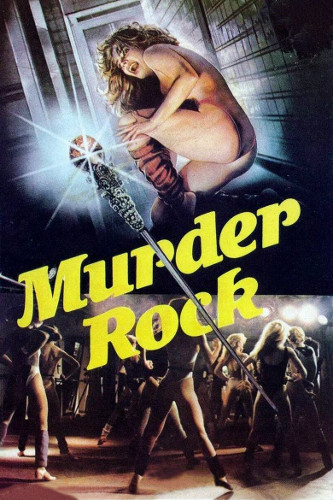
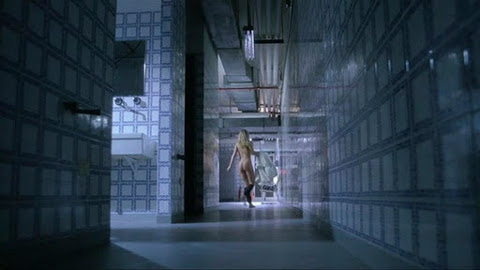
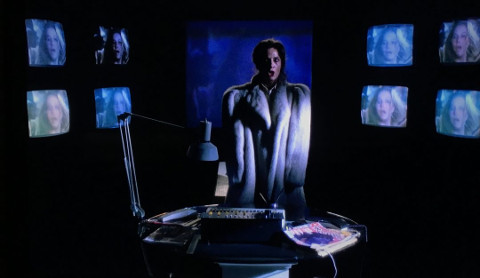

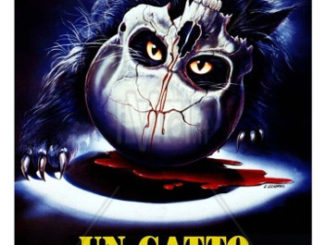
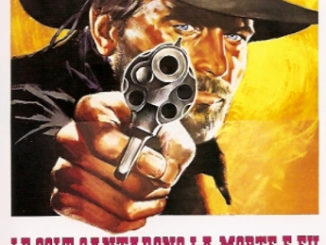

Be the first to comment